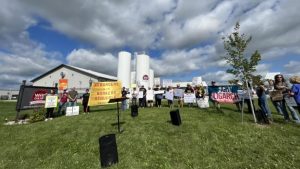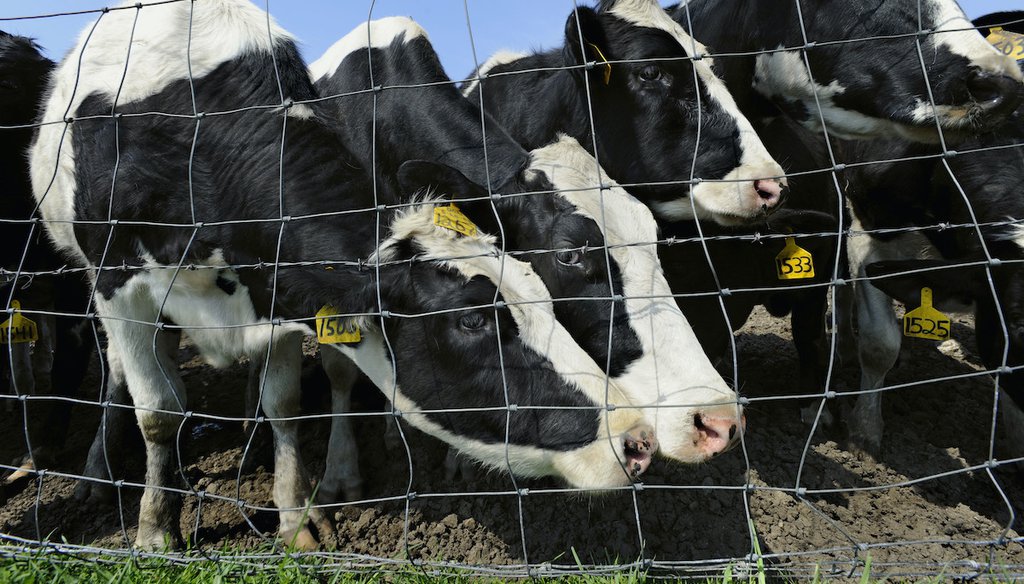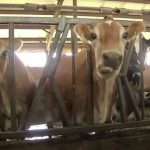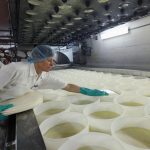
Milk may not be the most urgent issue for school administrators these days, but the issue came up in a New York state Senate hearing earlier this year.
During a Feb. 24 hearing of the New York Senate Agriculture Committee, agricultural law attorney and dairy producer Lorraine Lewandrowski called for a greater investment in dairy farms and rural communities.
Lewandrowski prefaced her testimony by describing several issues that dairy farmers are struggling with. Including New York state’s strict laws on milk pricing.
Lewandrowski said dairy farmers face strict production limits, reducing their bargaining power. “Our food model is based on faraway sources while we throw our rural communities away,” she said.
One of the points Lewandrowksi made in her testimony is that public school students in the state should be able to consume whole milk.
“Make it legal for a New York state student to have a glass of fresh whole milk,” Lewandrowski said. “A beautiful food from a beautiful land.”
Is whole milk really prohibited in New York public schools? Basically, yes.
Where the ban on whole milk came from
In 2006, New York City school districts underwent a far-reaching rebranding of their student lunch programs, focusing on improving the meals’ nutritional values. As a result, whole milk was removed and ultimately banned by the city’s education board.
The options left on the menu were 1% milk, skim, and skim chocolate milk.
Then, in 2010, the Healthy, Hunger-Free Kids Act was passed by Congress. The law altered school lunch programs nationally by banning whole milk, 2% white milk, 2% flavored milk, and 1% flavored milk. This left students’ milk options to flavored skim, white skim, or white 1%.
During the 2017-18 school year the regulations were loosened and Congress allowed schools to offer 1% flavored milk with proof of operational hardship. By 2018-19, schools were allowed to offer the 1% flavored milk without citing an operational concern, according to the USDA. But whole milk remains unavailable.
Efforts to end the ban
In March of 2021, Reps. Glenn Thompson, R-Pa., and Antonio Delgado, D-N.Y., introduced the Whole Milk for Healthy Kids Act of 2021. It would allow flavored and unflavored whole milk back into school cafeterias.
New York state Sen. George Borrello, a member of the Agriculture Committee, told PolitiFact that he “wholeheartedly” supports efforts to return whole milk to schools. He said that doing so would provide children in New York with another option at lunch while also aiding the state’s dairy industry.
Dairy farmers want to be able to sell whole milk in addition to the other types because they contend that it’s more nutritional and cuts down on waste by students who don’t like the taste of lower-fat milk.
Food Waste Warrior, a project of the World Wildlife Fund, found that as much as 45 million gallons of milk were wasted in 2019 in school lunchrooms, a value of $138 million. The study predicted that total food waste in schools could cost as much as $9.7 million per day or $1.7 billion per school year.
“We are losing an entire generation of students who don’t know about appreciating a good glass of flavorful milk,” said Lewandrowksi “How could this be good? If food is given to students, wouldn’t choosing foods that children prefer be better?”
Our ruling
Lewandrowski said it’s not currently “legal for a New York State student to have a glass of fresh whole milk.”
New York City banned providing whole milk in schools in 2006, and the federal government banned whole milk nationally — and therefore in all of New York state — in 2010.
We rate this statement True.
























